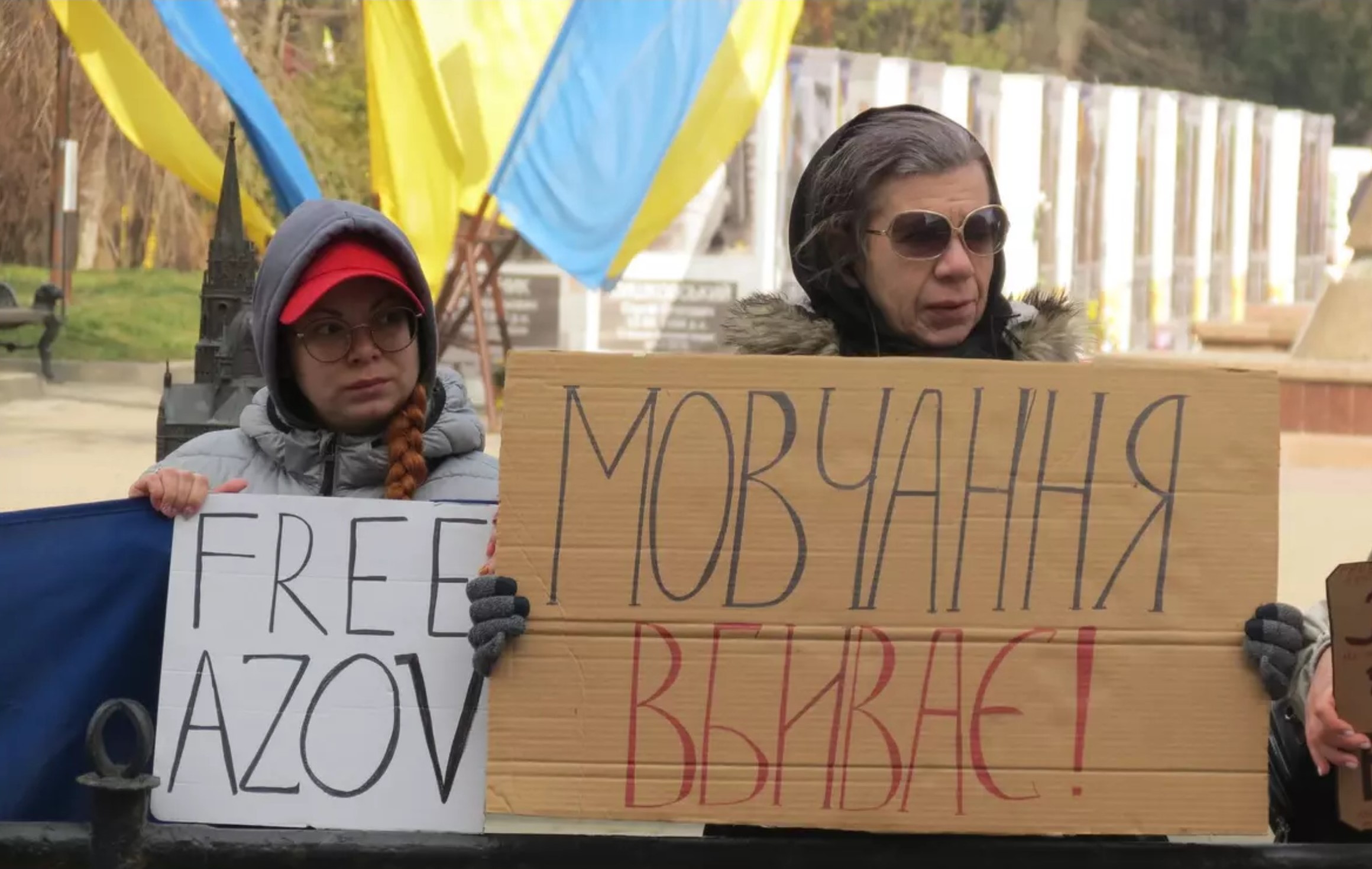UN records 32 summary executions by Russia of Ukrainian prisoners of war since December

In its latest monitoring report, the Office of the High Commissioner for Human Rights has provided harrowing details of Russia’s “widespread and routine” torture of Ukrainian prisoners of war [POW]. During the reporting period (December 2023 to February 2024) one POW is believed to have died as a result of the torture and failure to provide medical assistance, while the UN’s Human Rights Monitoring Mission recorded at least 32 summary executions by the Russians of Ukrainian prisoners of war.
As reported here, many of the executions came to light because of drone footage, often posted on Russian Telegram channels. It is possible that the Russians actually post such footage deliberately as a method of demoralizing Ukrainian forces. Video footage alone, however, may not be sufficient proof of what, if true, constitute war crimes. The Monitoring Mission has thus far been able to verify three of the twelve cases of executions, in which Russian soldiers executed seven Ukrainian defender “hors de combat”.
Of eight cases where the evidence of such executions came from videos posted on social media, the monitors had so far (as of 29 February 2024) received corroborating information for one of the videos (reported here). “In that video, what appears to be a group of armed Russian soldiers stands 15-20 meters behind three Ukrainian servicemen who are kneeling with their hands behind their heads. After a few seconds, smoke appears from the Russian soldiers’ weapons and the Ukrainian servicemen fall to the ground. One of the armed soldiers then approaches the bodies and shoots at one of the soldiers lying on the ground. “
The Monitoring Mission learned from a Ukrainian POW who was recently released that the killing took place near Robotyne, in Zaporizhzhia oblast, in December 2023, and that the men killed were from his unit.
A recently released Ukrainian POW confirmed to OHCHR that the incident took place near the village of Robotyne, Zaporizhzhia region, in December 2023 and that the servicemen killed were from his unit.”
“In another case, three male Ukrainian POWs captured by Russian armed forces were executed at the beginning of January 2024 in Zaporizhzhia region. According to a witness, two Ukrainian soldiers were executed on the spot after their surrender. The witness also saw Russian servicemen kill a third Ukrainian POW who had been injured by a mine while being forced by the Russian servicemen to conduct demining work.”
“In yet another incident, two Ukrainian servicemen were captured on 18 December 2023 near the village of Robotyne in Zaporizhzhia region. They were interrogated overnight in the basement of a building. According to a witness, a Russian serviceman shot one of the Ukrainian POWs in the leg, allegedly for not speaking clearly. Soon after, the same serviceman shot the POW twice in the back, killing him.”
As well as those cases where the Monitoring Mission were able to speak with witnesses, there is at least one other case where relatives recognized the bodies of their loved ones in one of these videos. The Russians are believed to have shot dead at least five gravely wounded Ukrainian soldiers who could not be evacuated from near Avdiivka. The 110th Brigade reported, after the video was posted, how there had been negotiations, via mediators and apparent agreement from the Russians that the men would be evacuated and provided with medical care. Instead, all five men were shot and killed. The bodies of three of the men: Andriy Dubnytsky; Heorhiy Pavlov and Ivan Zhytnyk – were recognized by their families, while the 110th Brigade learned from their sources that the Russians had also killed Oleksandr Zinchuk and Mykola Savosik.
See also: Russia’s killings of Ukrainian prisoners of war are likely state-approved war crimes
Torture of Ukrainian POWs
The Monitoring Mission provides accounts given by former POWs, however does not report anything that was not already known. Earlier in March, the Independent International Commission of Inquiry on Ukraine, a body created by the UN’s Human Rights Council, reiterated, in its third report, earlier findings that Russia’s torture of both Ukrainian POW and of civilians had been “widespread and systematic.
During the three months of its reporting period, OHCHR had interviewed 60 recently released Ukrainian POWs, all of them men. “The POWs provided credible and detailed accounts consistent with previous OHCHR conclusions that torture and ill-treatment of Ukrainian POWs in Russian internment is widespread and routine and that POWs are held in conditions that are not in line with IHL requirements.”
The statistics are horrifying, with only two of the men not having suffered torture or ill-treatment. “Fifty-eight of the 60 POWs interviewed by OHCHR provided detailed accounts of how Russian servicemen or officials tortured or ill-treated them during their captivity. The most common methods of torture included beatings, electric shocks, threats of execution, mock executions, and positional torture.”
“Those who spent more than a few weeks in captivity and were transferred to more established facilities also consistently recounted torture or ill-treatment in other situations, for example during violent “admission procedures,” everyday inspection of cells, and walks to the courtyard and shower. In these situations, guards often beat the POWs, used stun guns to give them electric shocks, forced them to stand for prolonged periods in stress and painful positions, or sometimes exposed them to cold by forcing them to walk naked and barefoot outside in the winter period. In several facilities, POWs were made every day to stand still in their cells for the entire day for certain periods of internment.”
“In many facilities, guards also forced POWs to learn and sing Russian patriotic songs and the national anthem of the Russian Federation, recite Russian poetry and propaganda materials, tell jokes, or imitate animal sounds. “
These, and other deliberate forms of torture, cruel or degrading treatment, are almost certainly suffered by the huge number of civilian hostages whom Russia is also holding, in flagrant violation of international law.





